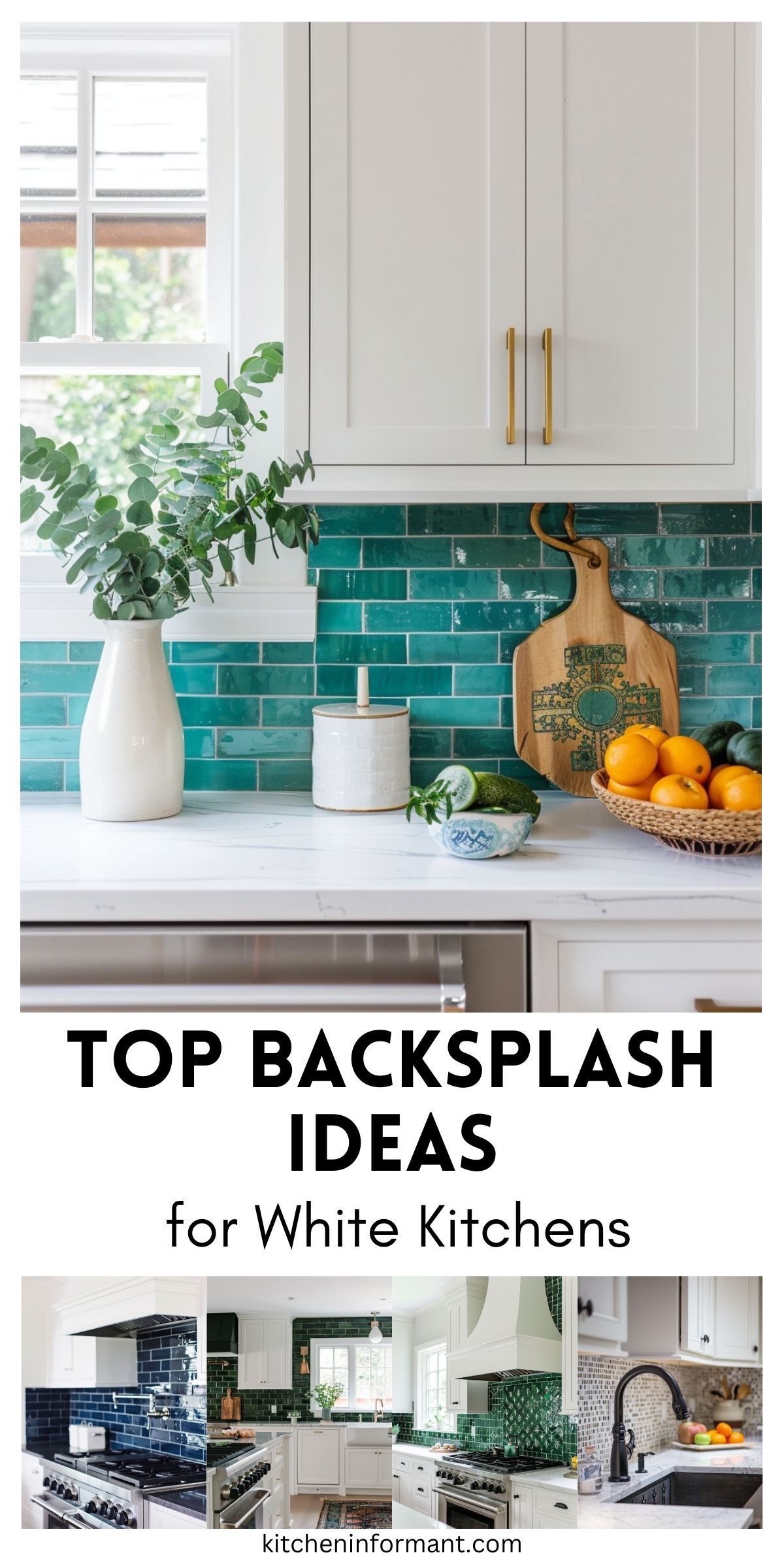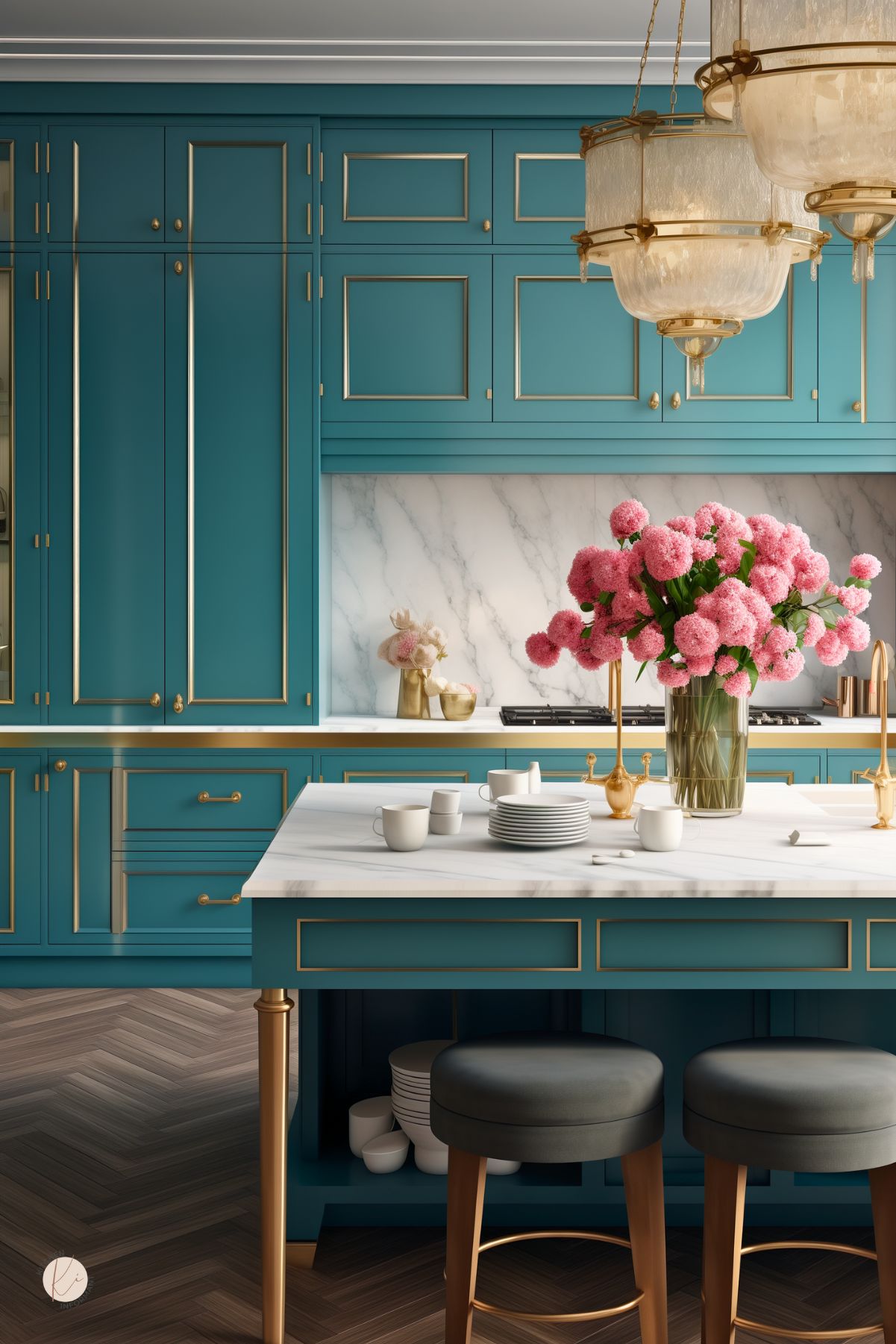White kitchens are a timeless classic that never goes out of style. They are clean, bright, and elegant, and they provide a perfect backdrop for any design style.
However, the challenge with white kitchens is to create a backsplash that complements the kitchen and adds visual interest without overwhelming the space.
There are many backsplash ideas that work well with white kitchens, and choosing the right one can make all the difference.
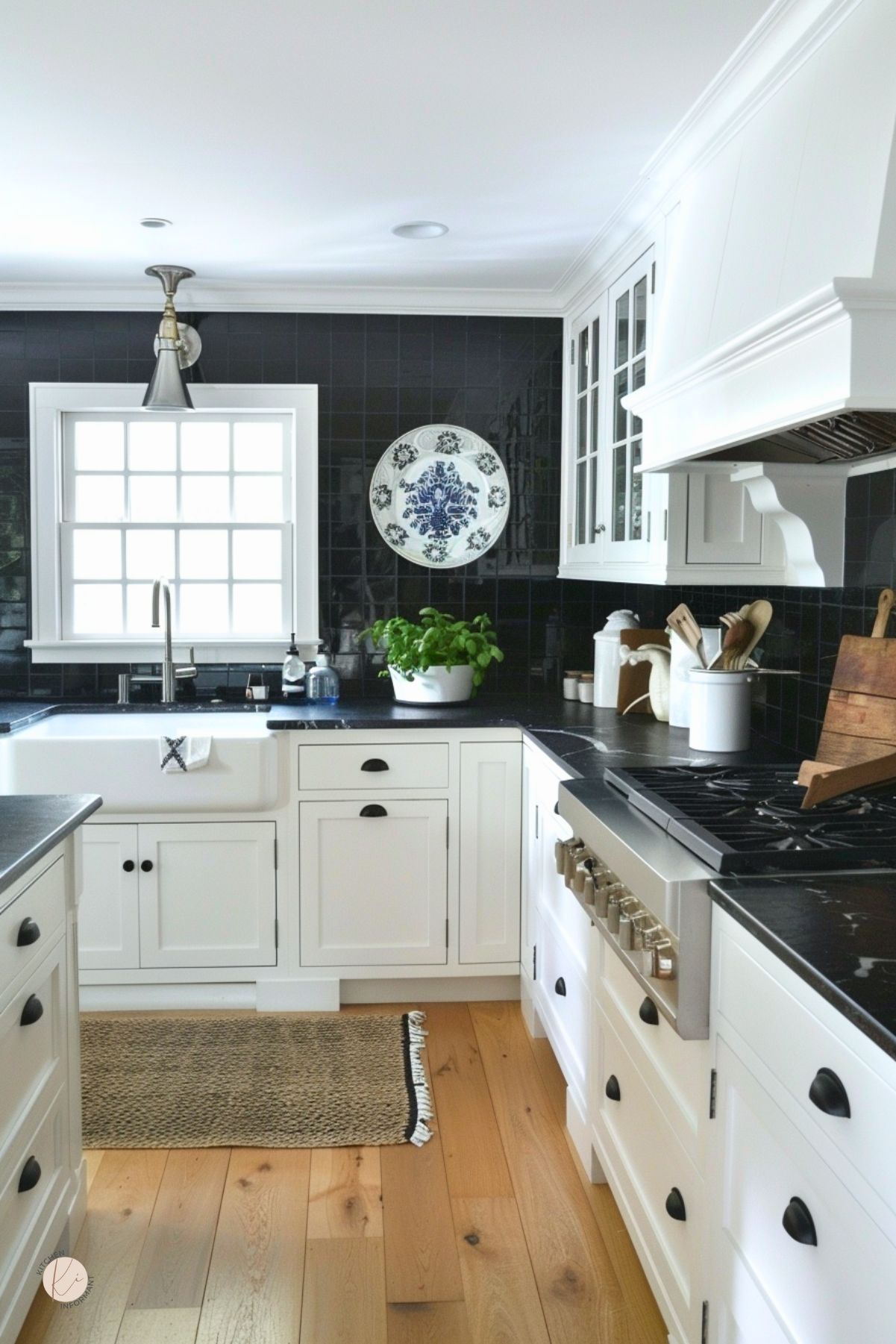
One popular backsplash idea for white kitchens is to use subway tiles. Subway tiles are simple, classic, and versatile. They come in a variety of colors, but the most popular choice for white kitchens is white.
Subway tiles are also affordable and easy to install, making them a great option for DIYers.
Another popular option is to use mosaic tiles. Mosaic tiles come in a variety of shapes, sizes, and colors, and they can be arranged in many different patterns.
They add texture, color, and visual interest to a white kitchen, and they work well with both traditional and modern styles.
The Role of Backsplashes in White Kitchens
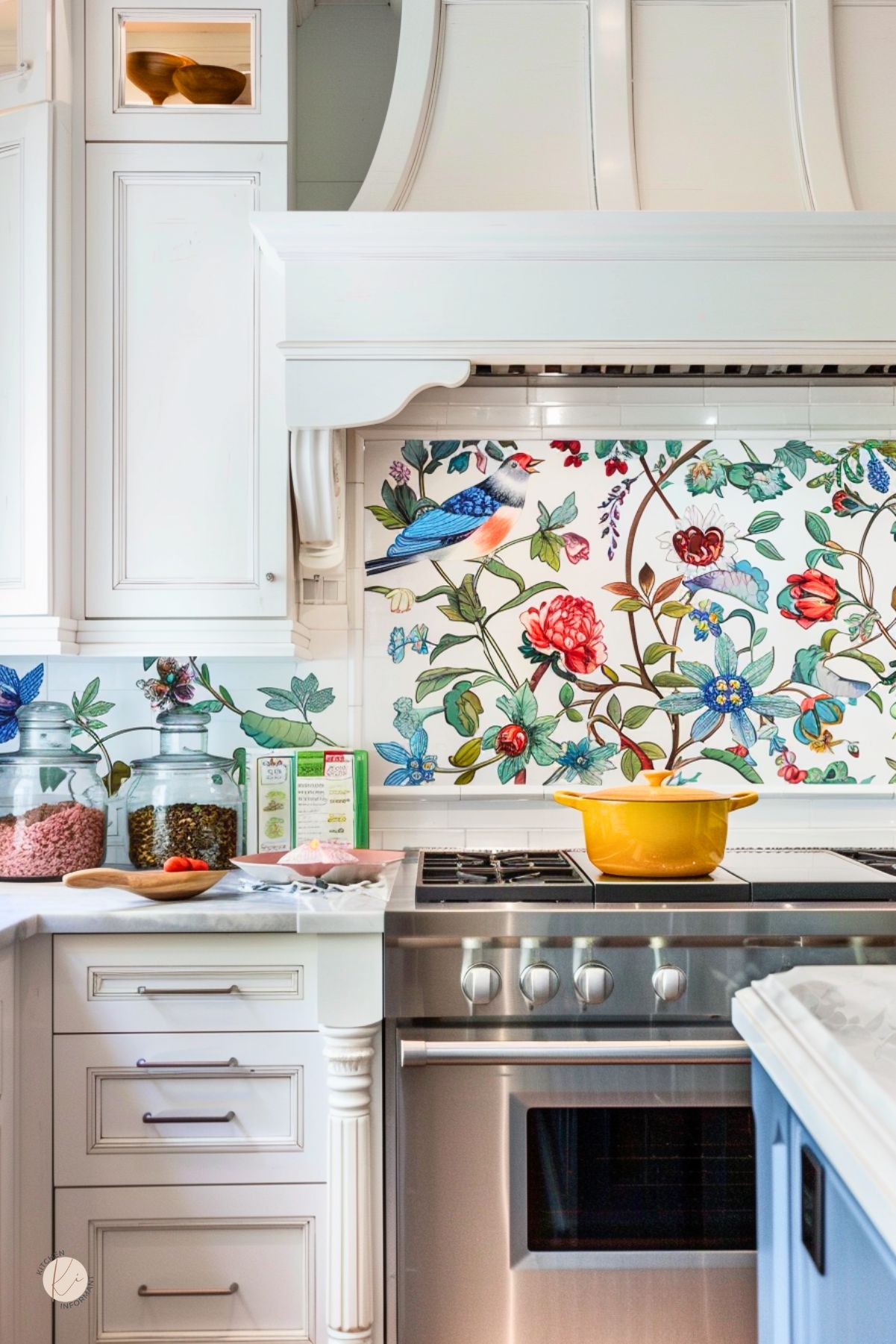
Backsplashes play a crucial role in white kitchens. They serve as a protective layer for the walls against spills, splatters, and stains.
At the same time, they add a decorative touch to the kitchen, enhancing its overall aesthetic appeal.
In white kitchens, backsplashes act as a canvas for the rest of the kitchen design. They provide a neutral background that allows other elements, such as cabinets, countertops, and appliances, to stand out.
A white backsplash can also make the kitchen appear brighter and more spacious by reflecting light.
When it comes to choosing the right backsplash for a white kitchen, there are many options available.
Some popular choices include subway tiles, mosaic tiles, natural stone, and glass.
Each material has its unique characteristics and can create a different look and feel in the kitchen.
For example, a subway tile backsplash can give a classic and timeless look, while a mosaic tile backsplash can add a pop of color and personality to the kitchen.
In addition to the material, the pattern and layout of the backsplash can also make a difference in the overall design.
A simple and straightforward pattern, such as a straight or diagonal layout, can create a clean and modern look.
On the other hand, a more intricate pattern, such as a herringbone or chevron layout, can add a sense of movement and texture to the kitchen.
Overall, the role of backsplashes in white kitchens is twofold: they protect the walls and enhance the design.
By choosing the right material, pattern, and layout, homeowners can create a backsplash that not only serves its practical purpose but also adds to the beauty and charm of the kitchen.
Material Choices for White Kitchen Backsplashes
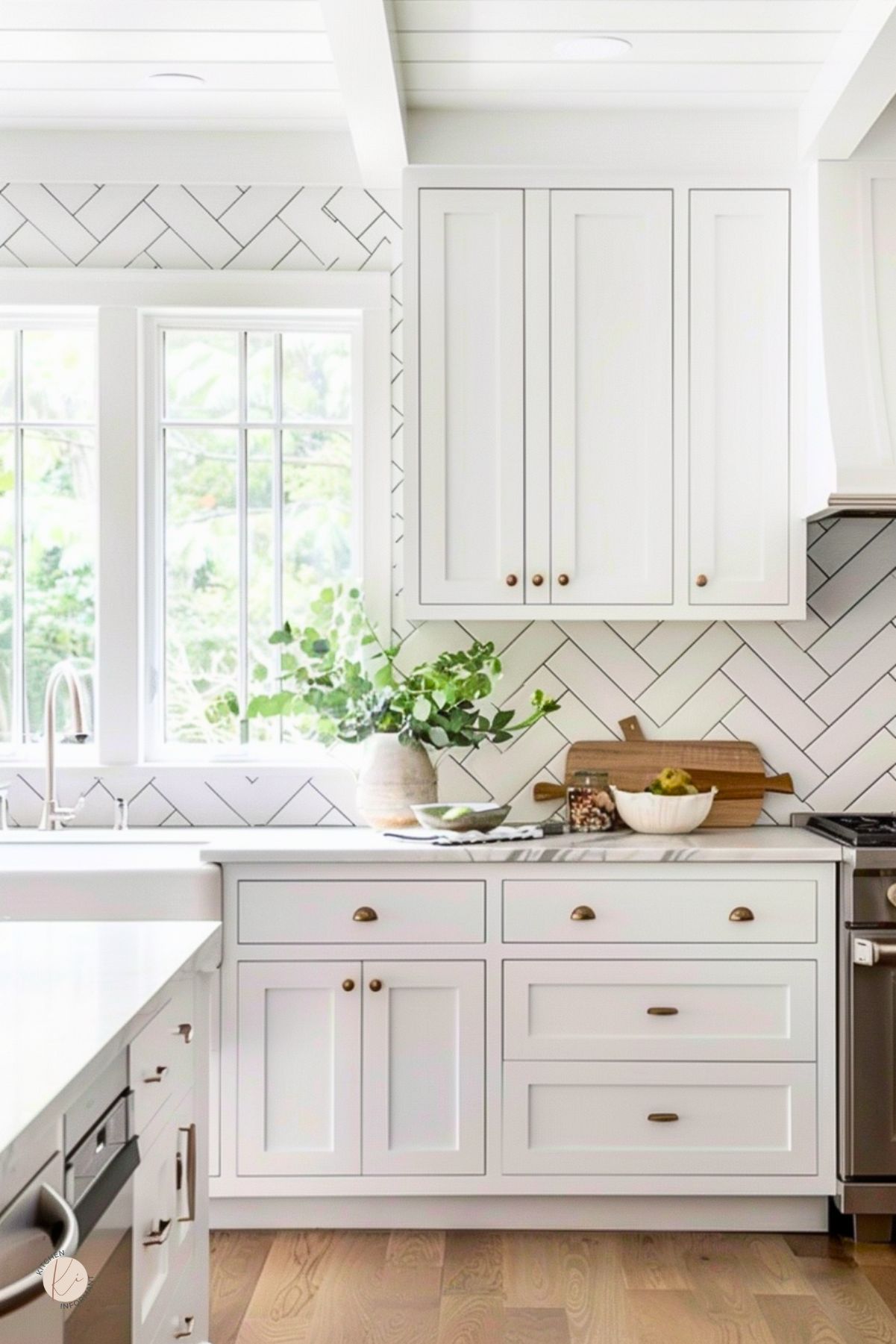
When it comes to choosing a material for a white kitchen backsplash, there are a variety of options available. Here are some of the most popular choices:
Classic Ceramic and Porcelain Tiles
Ceramic and porcelain tiles are a classic choice for white kitchen backsplashes. They come in a wide range of sizes, shapes, and finishes, making it easy to find the perfect fit for any kitchen.
Ceramic and porcelain tiles are also durable and easy to clean, making them a practical choice for busy kitchens.
Luxurious Marble Slabs
For a more luxurious look, marble slabs are a popular choice for white kitchen backsplashes. Marble has a timeless beauty and adds a touch of elegance to any kitchen.
However, it is important to note that marble is a porous material and can stain easily, so it may not be the best choice for every kitchen.
Modern Glass and Metal Options
Glass and metal are modern options for white kitchen backsplashes.
Glass tiles can be a great choice for adding texture and depth to a kitchen, while metal tiles can add a sleek and contemporary look.
Both glass and metal options are easy to clean and maintain, making them a popular choice for busy kitchens.
Eco-Friendly Recycled Materials
For those who are environmentally conscious, using recycled materials for a white kitchen backsplash is a great option.
Recycled glass tiles and metal tiles are becoming more popular, and they offer a unique and eco-friendly look for any kitchen.
Additionally, using recycled materials can help reduce waste and promote sustainability.
Overall, there are many material choices available for white kitchen backsplashes. Each material has its own unique benefits and drawbacks, so it is important to consider your specific needs and preferences when making a decision.
Color and Pattern Ideas
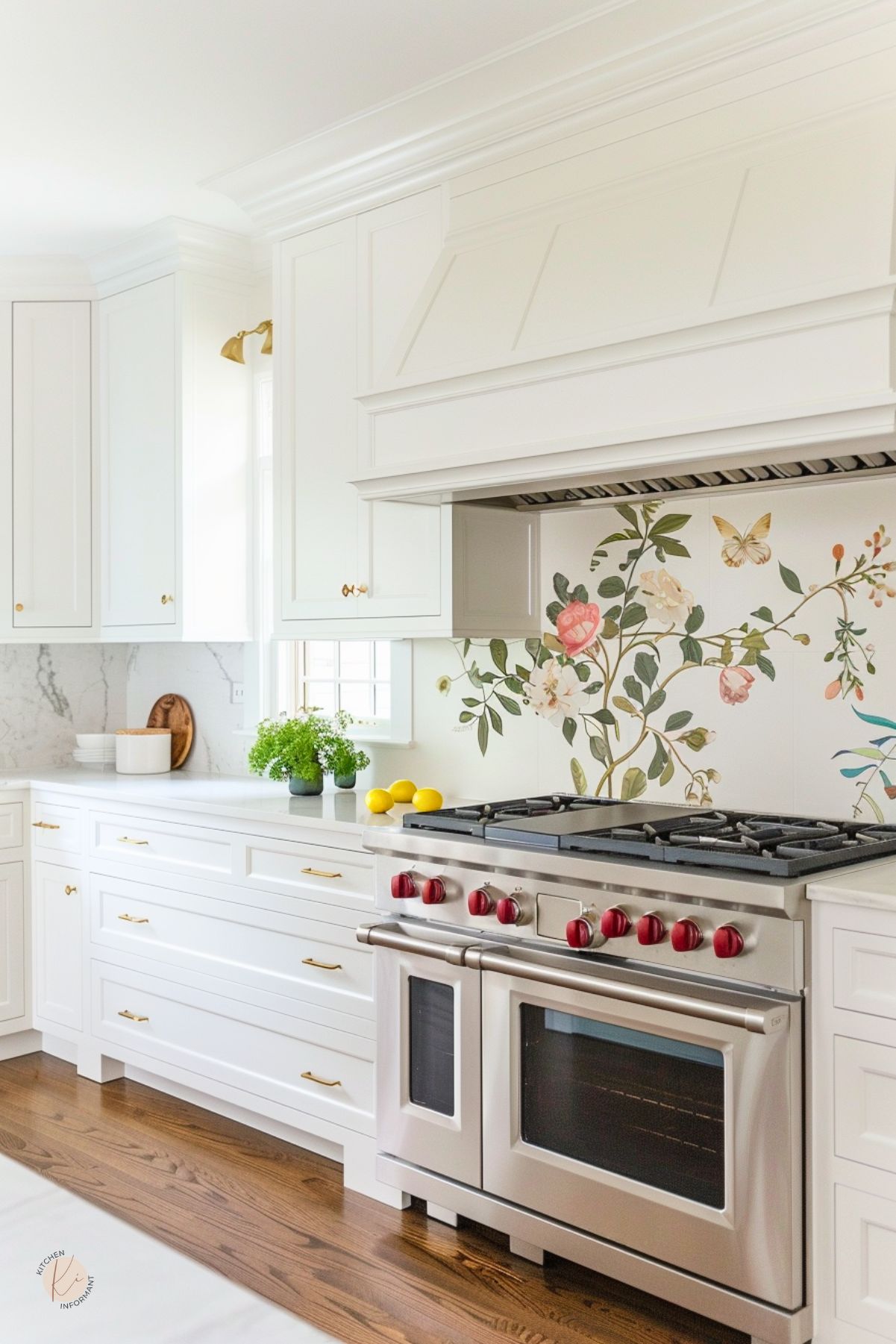
Bold Contrast with Dark Hues
For those who want to add a dramatic touch to their white kitchen, consider using dark hues for the backsplash.
Black, navy blue, and deep green are great options for creating bold contrast against white cabinets and countertops.
A black subway tile backsplash, for example, can add a sleek and modern touch to the kitchen.
Alternatively, a deep green Moroccan tile backsplash can add a touch of exoticism and warmth to the space.
Soft Neutrals for a Calming Effect
If you want to create a calming and serene atmosphere in your kitchen, consider using soft neutral colors for the backsplash.
Beige, cream, and light gray are great options for creating a subtle and sophisticated look.
A beige subway tile backsplash, for example, can add warmth and texture to the space without overwhelming it.
Alternatively, a light gray herringbone tile backsplash can add a touch of elegance and modernity to the kitchen.
Vibrant Patterns and Mosaics
For those who want to add a touch of personality and vibrancy to their white kitchen, consider using patterned or mosaic tiles for the backsplash.
Bold geometric patterns, floral designs, and colorful mosaics are great options for creating a unique and eye-catching look.
A blue and white Moroccan tile backsplash, for example, can add a touch of bohemian chic to the kitchen.
Alternatively, a colorful mosaic tile backsplash can add a playful and whimsical touch to the space.
No matter which color or pattern you choose for your white kitchen backsplash, make sure it complements the overall style and theme of your kitchen.
With the right backsplash, you can add depth, texture, and personality to your white kitchen, making it a space that you and your family will love to spend time in.
Grout Selection for Aesthetic and Maintenance
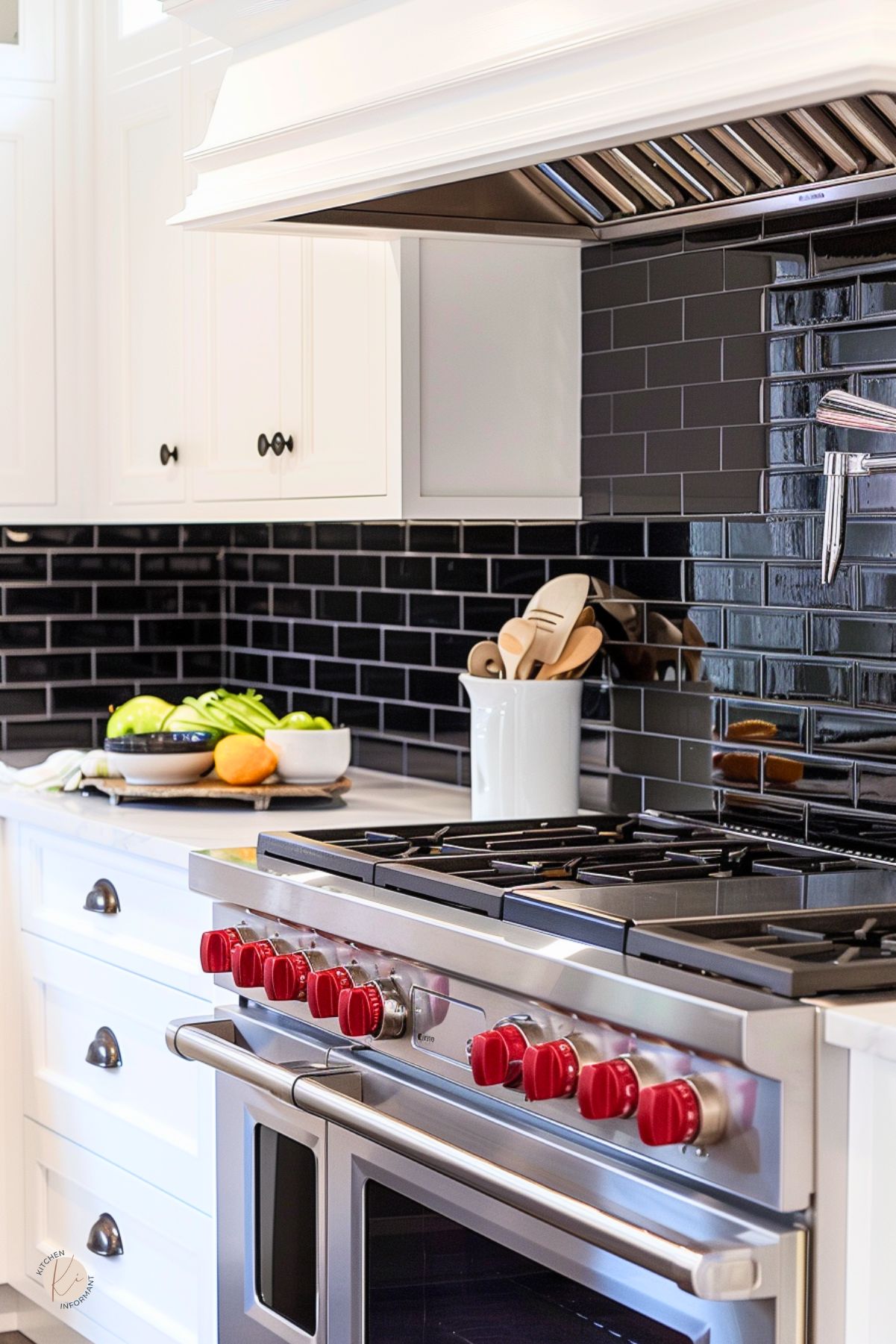
When it comes to selecting grout for a white kitchen backsplash, there are two main options: matching or contrasting grout colors.
Matching vs. Contrasting Grout Colors
Matching grout colors blend seamlessly with the tile, creating a cohesive and uniform look. This is a great option for those who want a clean and minimalistic look.
However, matching grout can also emphasize any imperfections in the tile, so it’s important to choose high-quality tiles.
Contrasting grout colors, on the other hand, can add dimension and interest to a white kitchen backsplash.
For example, a light gray grout can create a subtle contrast that highlights the shape and pattern of the tiles.
However, darker grout colors may require more maintenance to keep clean and may not be the best choice for high-traffic areas.
Grout Durability and Cleaning Tips
When selecting grout for a white kitchen backsplash, it’s important to consider durability and ease of maintenance.
Epoxy grout is a popular choice for its durability and stain-resistant properties. However, epoxy grout can be more difficult to work with and may require a professional installation.
For those who prefer traditional grout, make sure to choose a high-quality grout that is resistant to cracking and staining.
Regular cleaning with a mild detergent and soft brush can help keep grout looking like new.
In summary, choosing the right grout for a white kitchen backsplash is an important decision that can impact the overall aesthetic and maintenance of the space.
By considering factors such as color, durability, and maintenance, homeowners can find the perfect grout to complement their white kitchen backsplash.
Layout and Installation Techniques
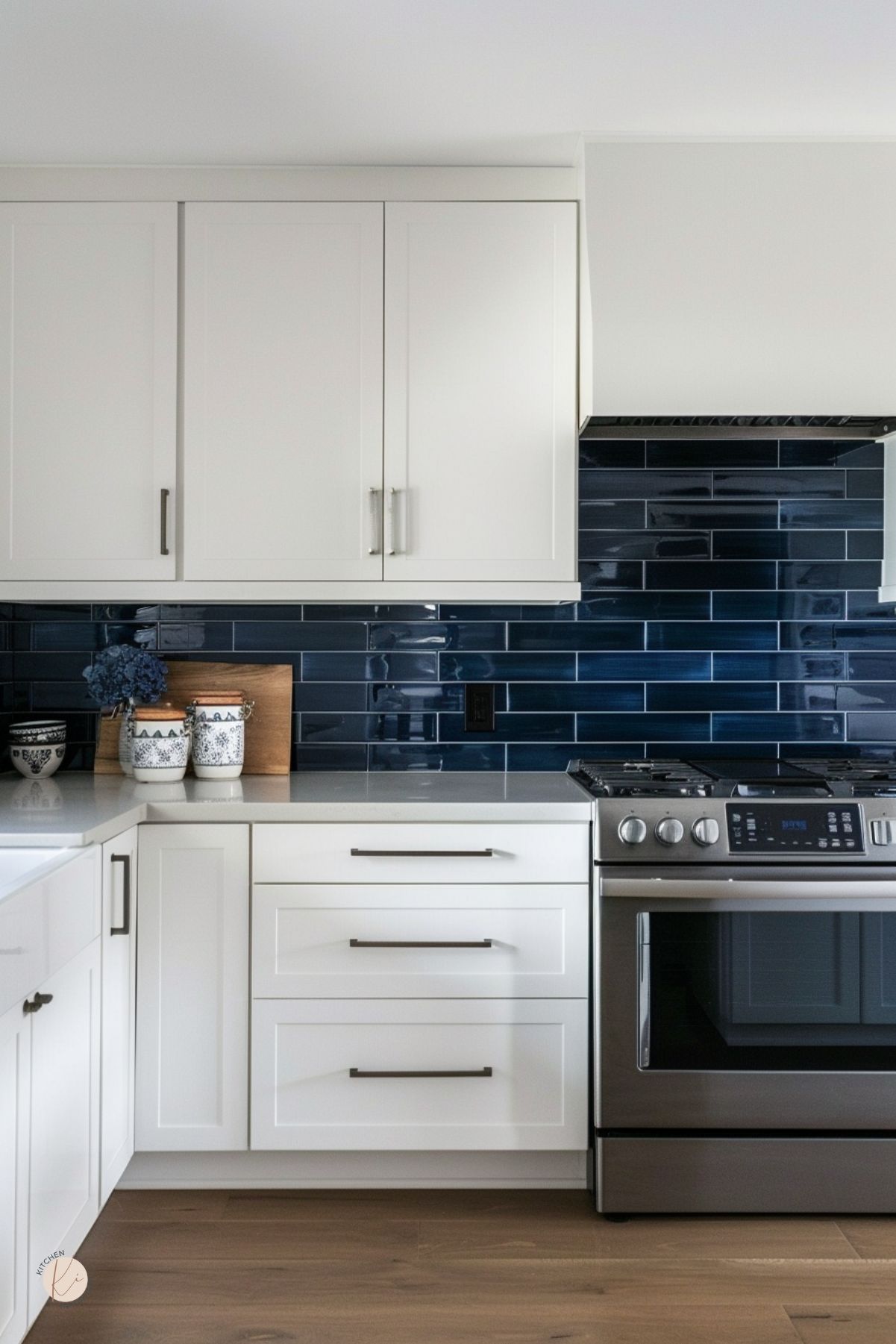
Herringbone and Chevron Patterns
Herringbone and chevron patterns are popular choices for white kitchen backsplashes. These patterns create a stylish and eye-catching look that can add visual interest to any kitchen.
To achieve this look, the tiles are laid out in a zigzag pattern, with each tile placed at a 45-degree angle to the one next to it.
Stacked and Subway Tile Layouts
Stacked and subway tile layouts are two classic choices for white kitchen backsplashes.
Stacked tiles are laid out in a simple, clean grid pattern, while subway tiles are laid out in a staggered brick pattern.
Both layouts are easy to install and can create a timeless look that will never go out of style.
DIY Installation Tips
Installing a backsplash can be a fun and rewarding DIY project for homeowners. However, it can also be a bit intimidating for those who have never done it before.
Here are a few tips to help make the process easier:
- Measure twice, cut once: Make sure to measure your space carefully before cutting any tiles. It’s always better to have a few extra tiles on hand than to run out in the middle of your project.
- Use the right tools: Make sure you have all the necessary tools on hand before you begin, including a tile saw, tile cutter, and trowel.
- Start from the center: When laying out your tiles, start from the center of the wall and work your way out. This will help ensure that your tiles are evenly spaced and centered.
- Use spacers: Spacers can help ensure that your tiles are evenly spaced and can create a more professional-looking finish.
- Take your time: Installing a backsplash can be a time-consuming process, so be patient and take your time. Rushing through the process can lead to mistakes and a less-than-perfect finish.
Incorporating Backsplash Accessories
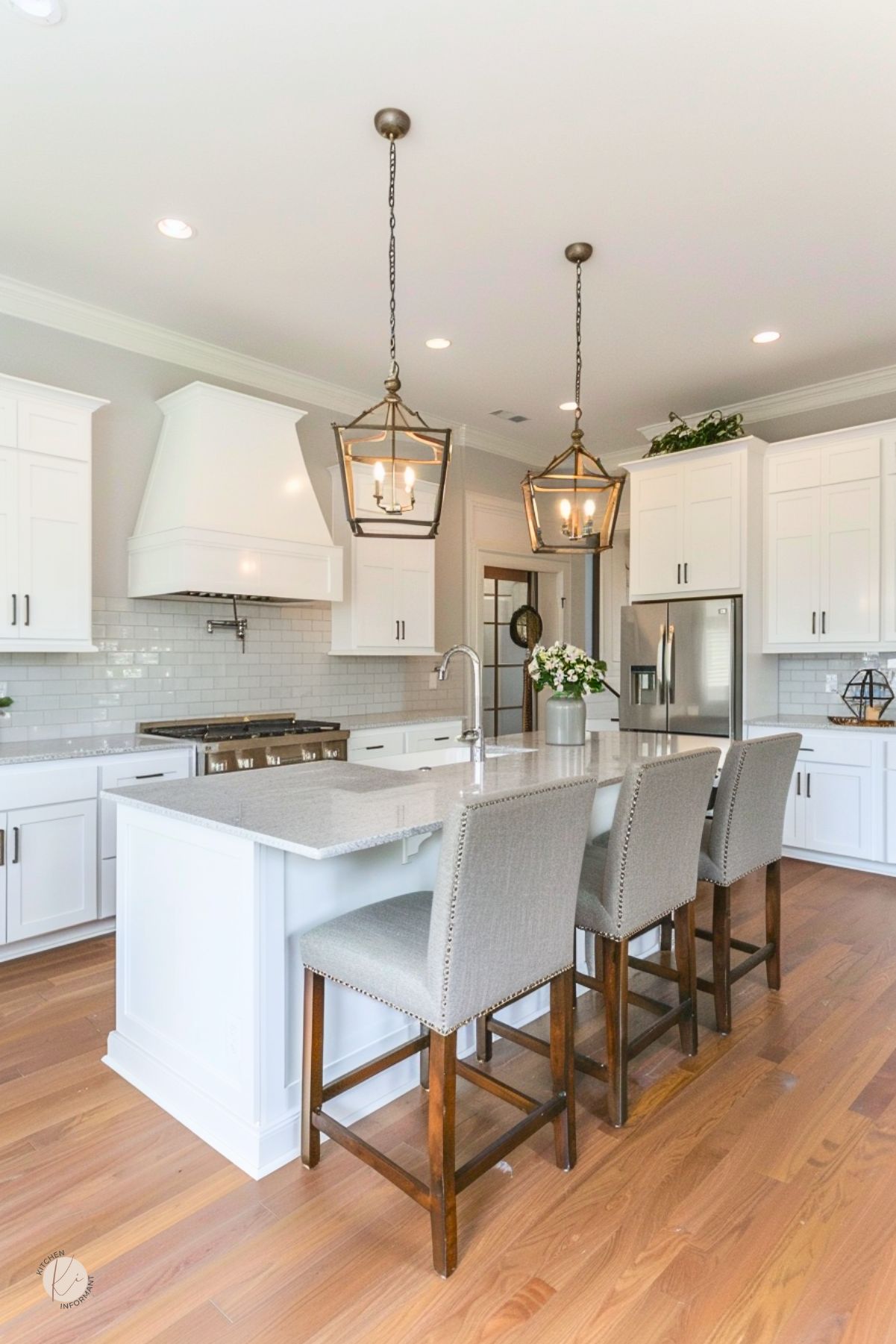
Shelving and Storage Solutions
Adding shelving and storage solutions to a kitchen backsplash can be a great way to maximize the use of space while also creating a visually appealing design.
One option is to install open shelves above the backsplash, which can be used to display decorative items or store frequently used kitchen tools.
Another option is to incorporate storage solutions directly into the backsplash itself, such as magnetic knife strips or hanging utensil hooks.
Integrated Lighting Features
Incorporating lighting features into a backsplash can add both functionality and style to a kitchen.
Under-cabinet lighting is a popular choice, as it can provide additional task lighting while also highlighting the backsplash design.
LED strip lighting can also be used to create a dramatic effect, such as illuminating a patterned tile backsplash.
For a more subtle approach, consider installing recessed lighting above the backsplash, which can provide a soft glow and create a cozy atmosphere.
Overall, incorporating accessories into a kitchen backsplash can help to create a cohesive and functional design.
By combining storage solutions and lighting features with a stylish backsplash design, homeowners can create a space that is both beautiful and practical.
Maintaining Your White Kitchen Backsplash

Keeping a white kitchen backsplash clean can be a challenge, especially if you cook frequently. Here are some tips to help you maintain its pristine appearance:
1. Wipe Up Spills Immediately
When cooking, it’s important to wipe up spills and splatters as soon as they happen.
This will prevent stains from setting into the grout or tiles. Use a damp cloth or sponge to clean up any messes.
2. Use a Gentle Cleaner
Avoid using harsh chemicals or abrasive cleaners on your white kitchen backsplash.
These can scratch the surface or cause discoloration. Instead, use a gentle cleaner specifically designed for backsplashes.
Diluted dish soap or vinegar and water can also work well.
3. Seal the Grout
If your white kitchen backsplash has grout lines, consider sealing them to prevent stains and discoloration.
Grout sealers are available at most hardware stores and are easy to apply.
4. Regularly Clean and Maintain
Regularly cleaning and maintaining your white kitchen backsplash is key to keeping it looking its best.
Wipe it down with a damp cloth or sponge at least once a week, or as needed.
Consider deep cleaning it every few months with a gentle cleaner.
By following these tips, you can keep your white kitchen backsplash looking beautiful for years to come.

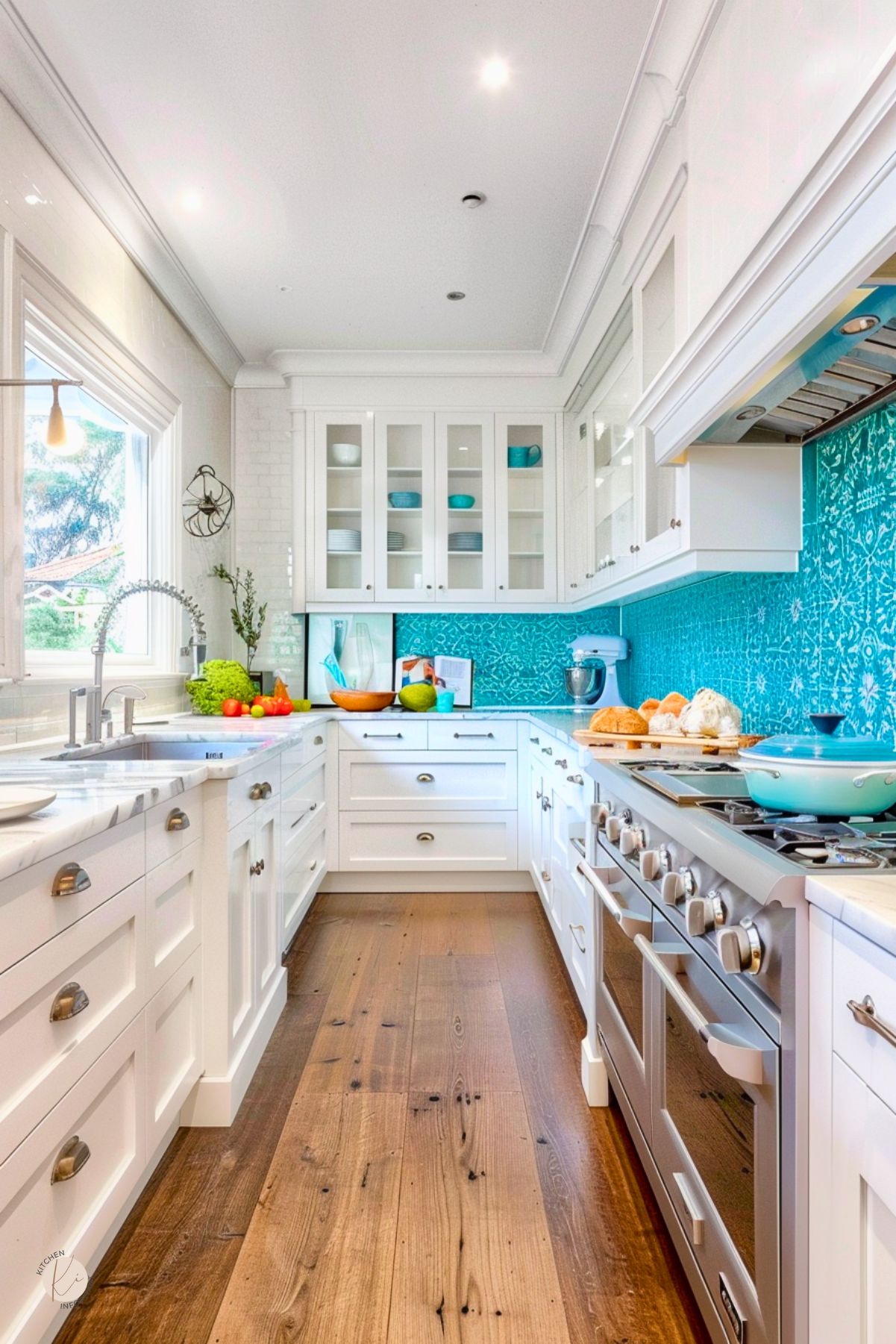
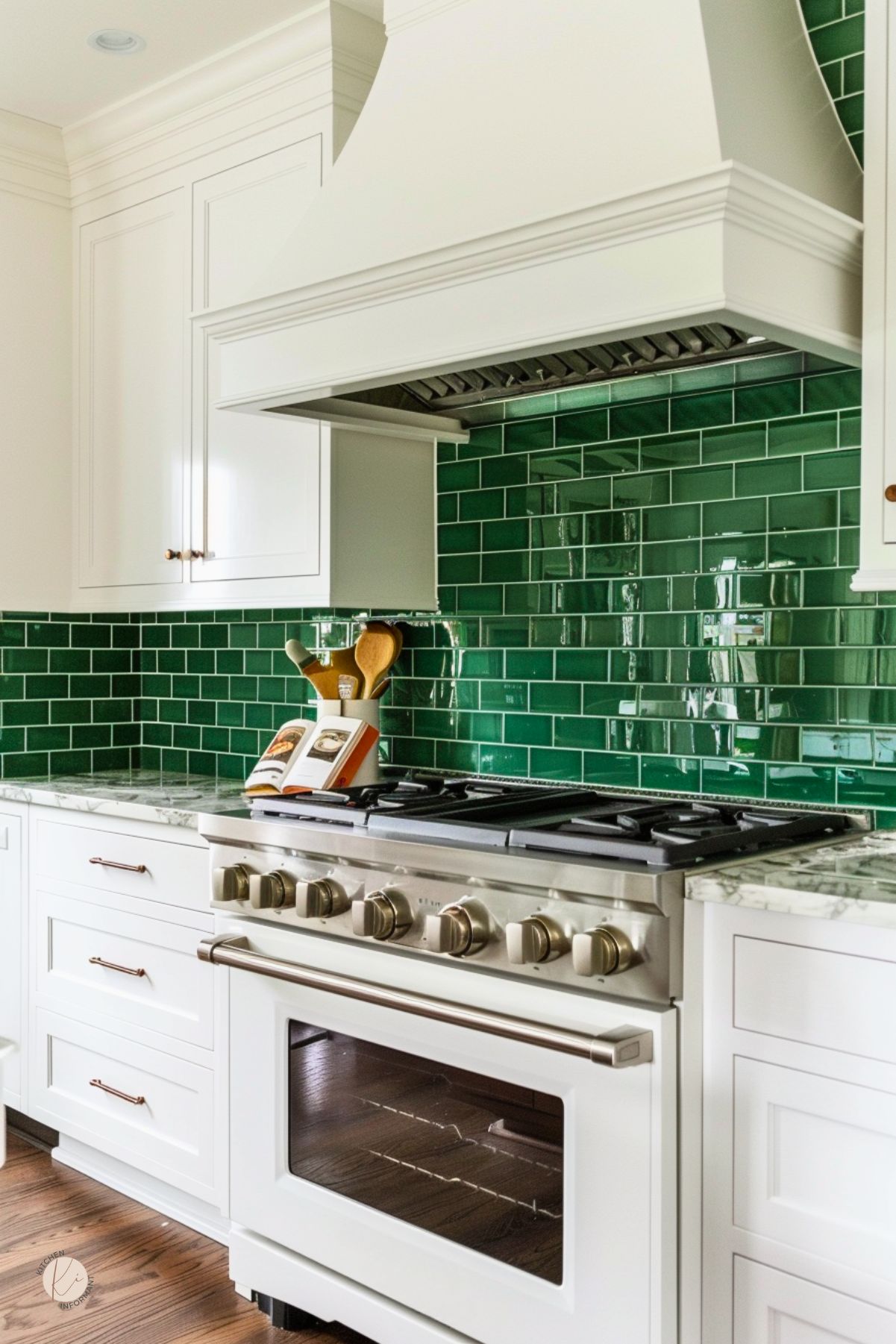
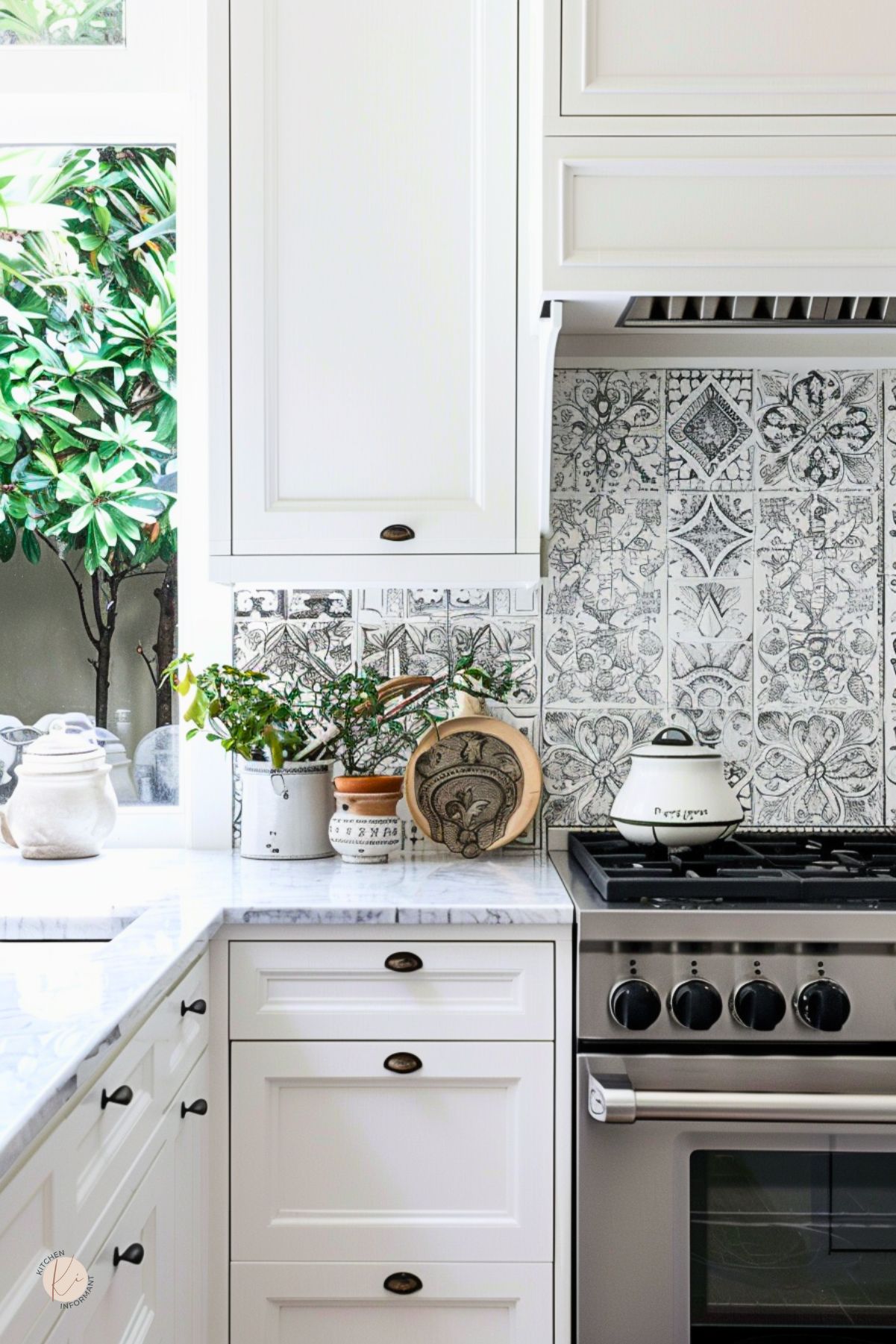
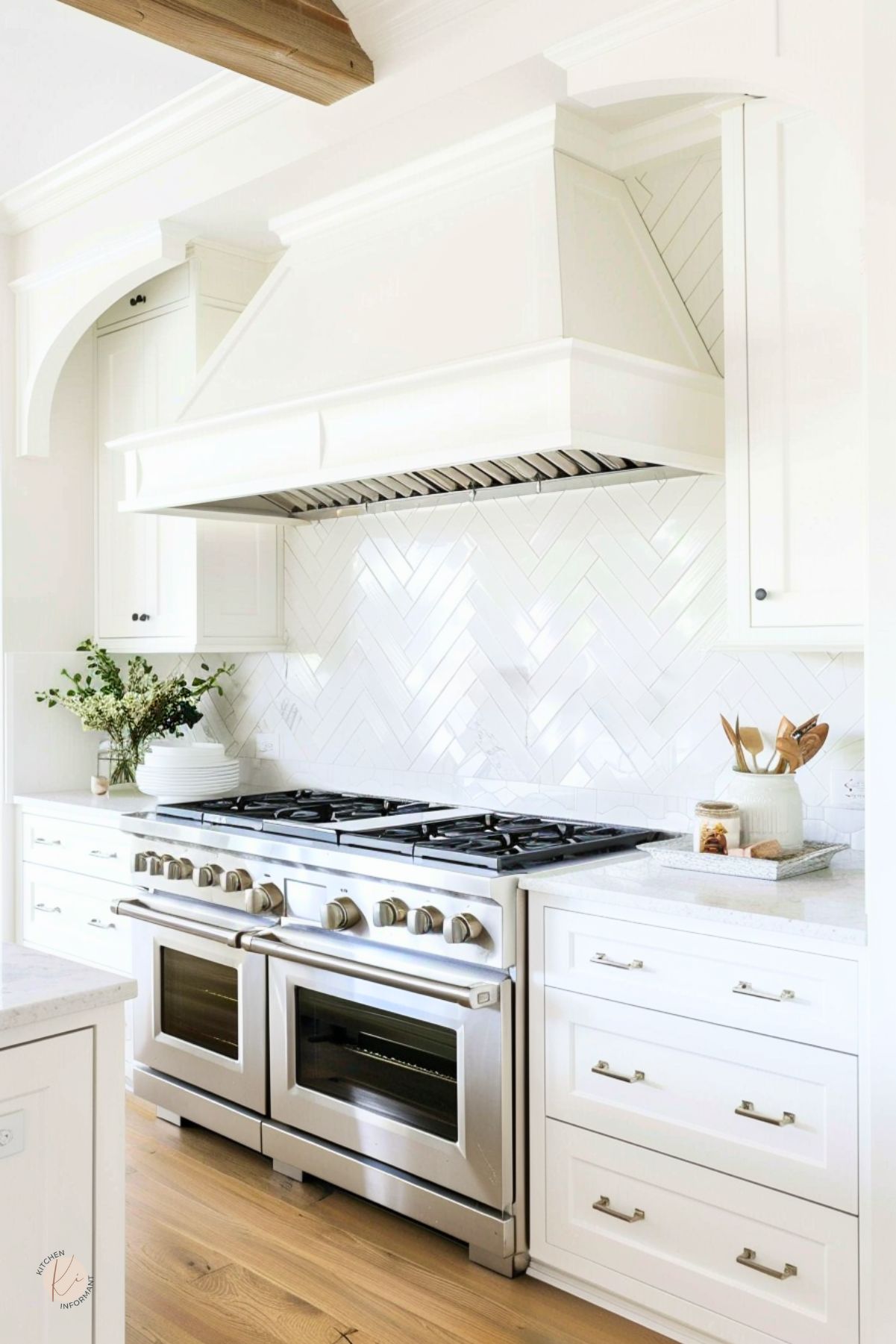

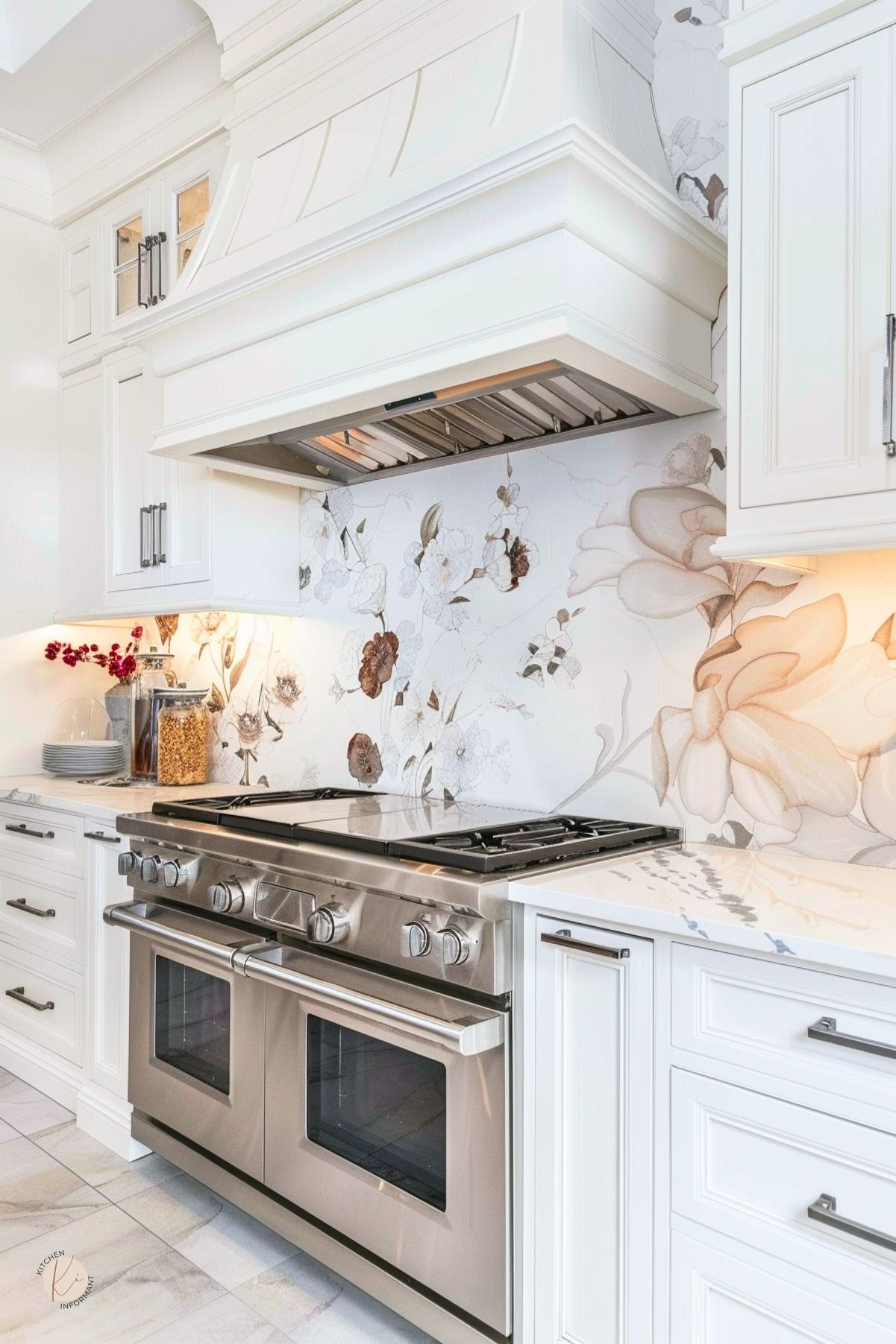
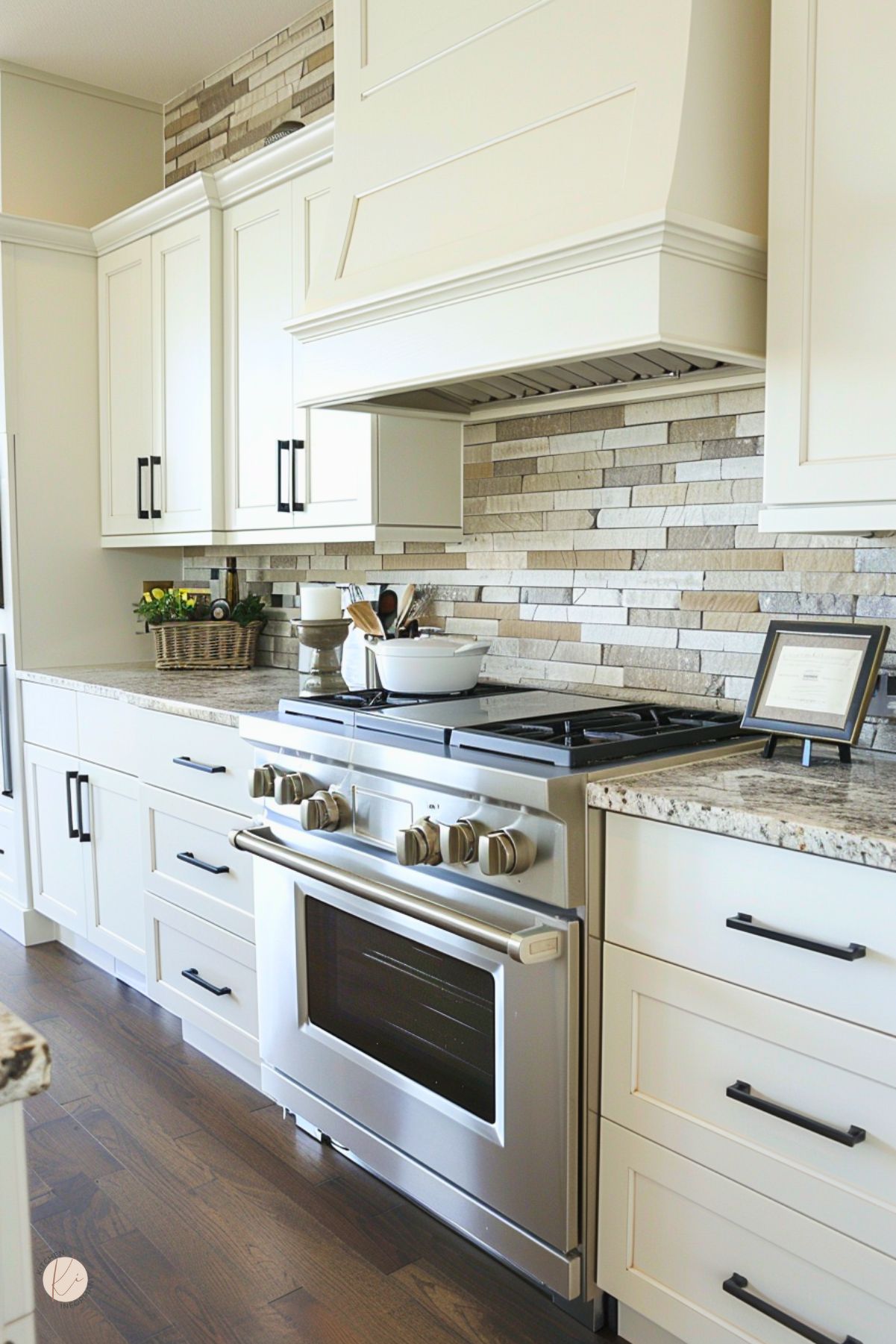
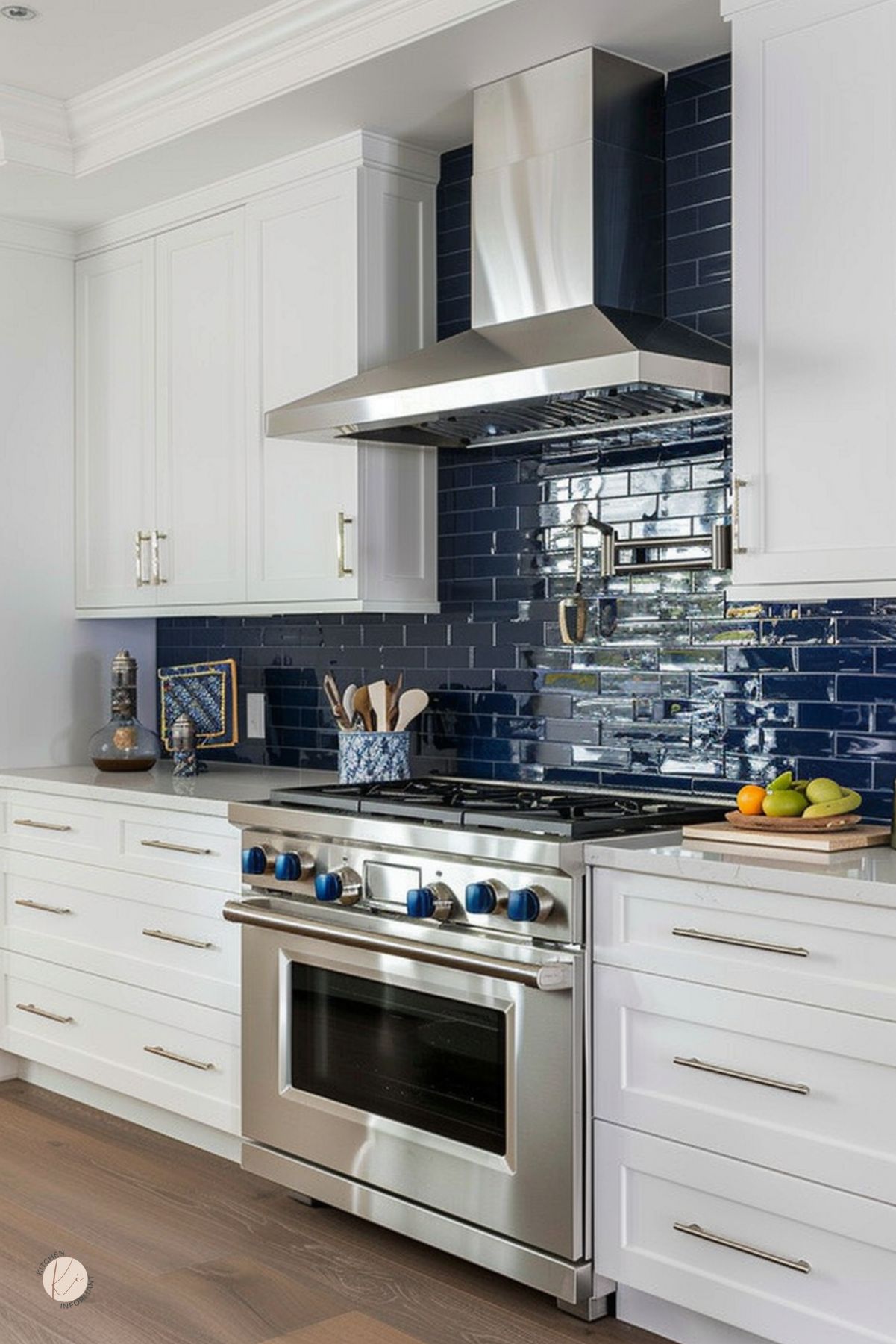
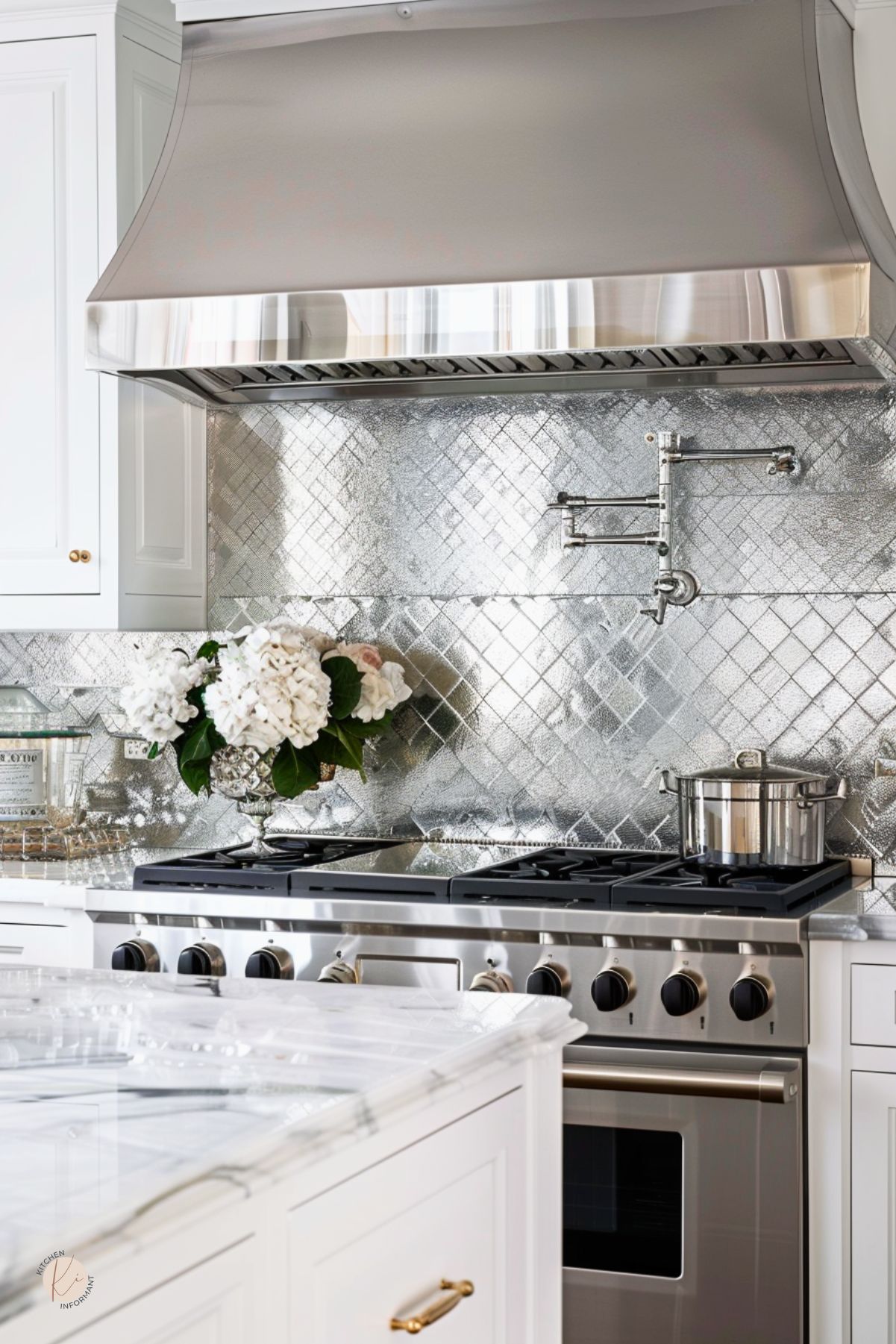

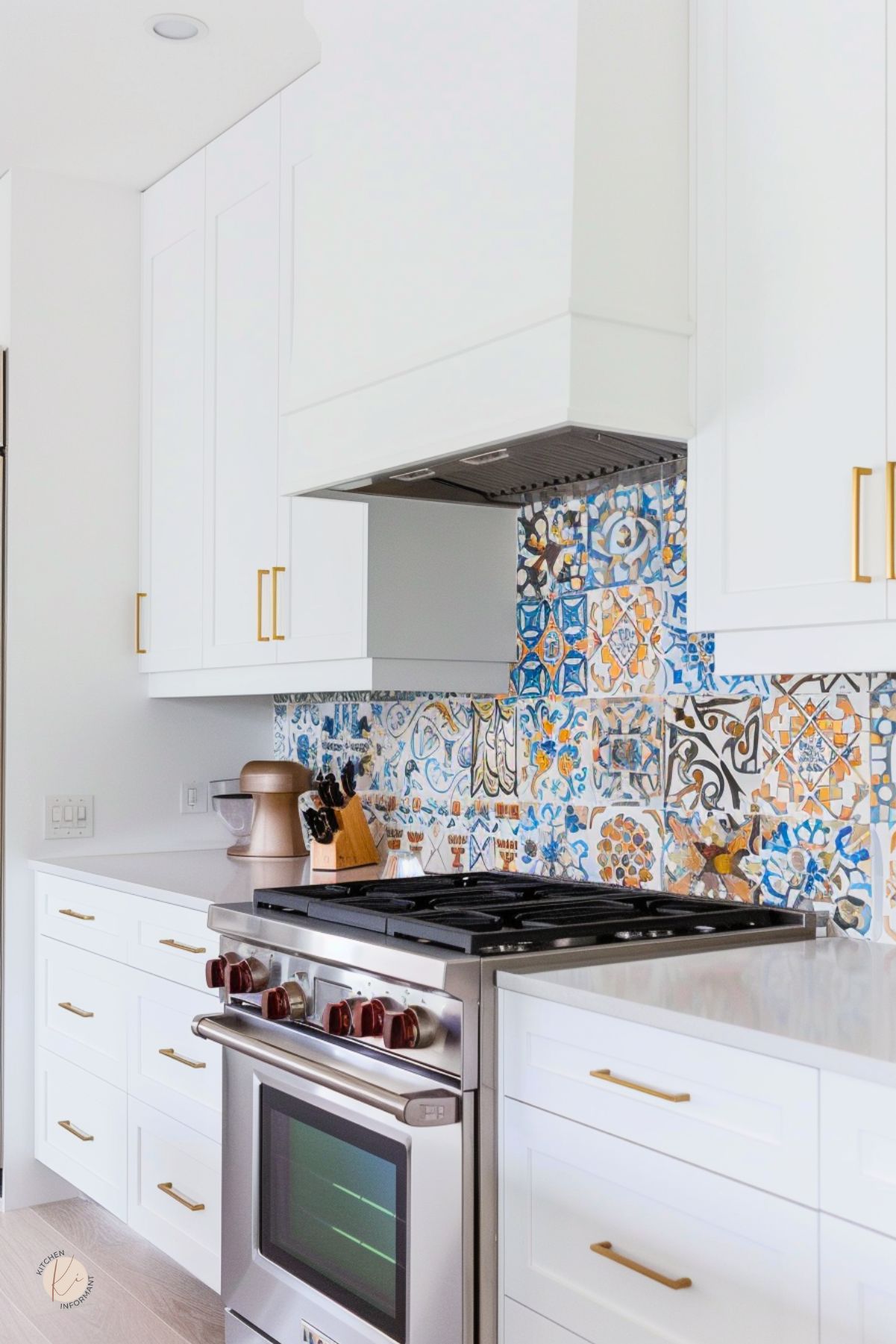
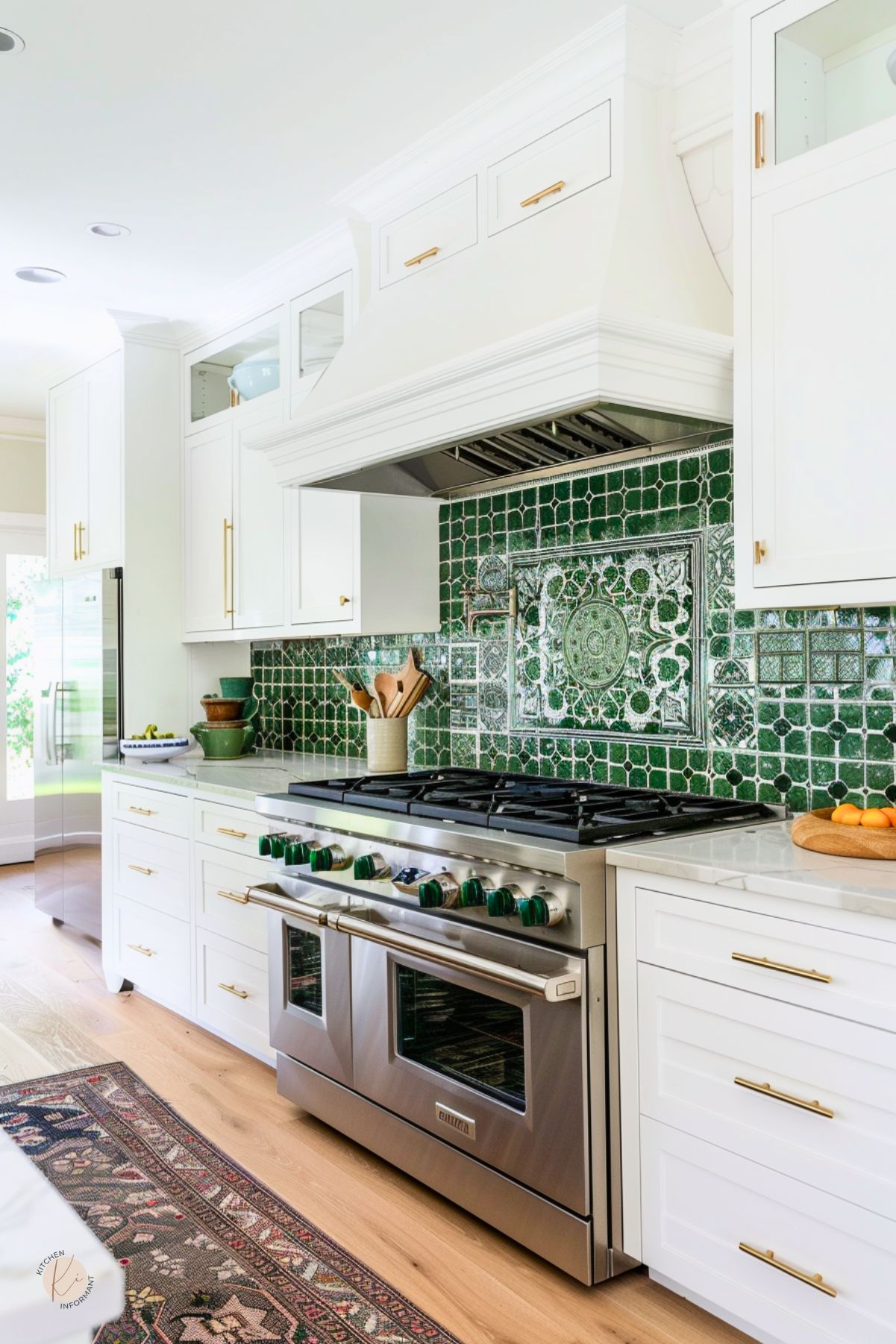
You May Also Like:
